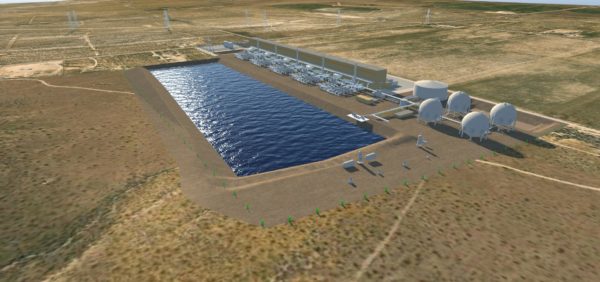500 MW compressed air energy storage project in California secures offtaker – pv magazine USA

Under a 25-year agreement valued at nearly $1 billion, a California community choice aggregator will purchase 200 MW of 8-hour energy storage from Hydrostor’s planned 500 MW facility.
Central Coast Community Energy in California has executed a 25-year power purchase agreement with Hydrostor, valued at nearly $1 billion, for 200 MW/1600 MWh energy storage from a planned 500 MW compressed air energy storage system.
Hydrostor’s storage technology can cost-effectively store up to eight hours of energy, the company says, using no fuels, on a footprint significantly smaller than a comparably sized pumped hydro storage facility. The 500 MW project will require less than 100 acres.

The California project is one of four energy storage projects that Hydrostor is developing worldwide, after completing two pilot-scale projects.
A Hydrostor video says its technology stores energy by first using electricity to run a compressor, producing heated compressed air, and capturing and storing the heat using a thermal management system. The compressed air is then sent underground through a shaft, and stored in purpose-built caverns that are initially full of water. In the process, the compressed air forces the water up a shaft into a closed loop reservoir on the surface.
When power is needed, water from the reservoir is allowed to fill the underground caverns, driving the stored compressed air up a shaft to the surface, where it is heated with stored heat and then expanded through a turbine to generate electricity.
Central Coast Community Energy (3CE) said its 200 MW share of the project will help the agency meet its goal of providing 100% clean and renewable electricity by 2030 to its 447,000 customers between Santa Cruz and Santa Barbara counties. The project is located outside Rosamond in Kern County, and known as Willow Rock.
“Retiring fossil fuels requires tremendous amounts of energy storage and that will require developing new technologies and improvements to existing technologies,” said Robert Shaw, chief operating officer of 3CE. “In pushing the envelope, we are clearing the path toward reliability and reduced emissions.”
3CE has executed 19 power purchase and energy storage agreements since its formation in 2017. The agency currently has commitments for 856 MW of clean and renewable generation and 285 MW of energy storage capacity. Five of these projects came online last year, currently serving 22% of the agency’s load.
Hydrostor said the Willow Rock project will charge using surplus renewable energy and discharge to the grid at times of higher demand, reducing the need for new peak-demand generating facilities and deferring the need for “costly, difficult-to-permit” transmission lines.
The company expects the project to employ up to 40 full-time operators, and to have no performance degradation over a 50-plus year lifespan.
As Hydrostor’s technology employs “proven components” from the hydrocarbon sector, the company says it “delineates a clear pathway for skillsets and expertise from the fossil fuel industry to play a central role in the global energy transition.”
Toronto-based Hydrostor said that offtake discussions are ongoing with several parties for the 300 MW balance of the 500 MW project. Formed in 2010, the company calls its technology Advanced Compressed Air Energy Storage, or A-CAES.
On January 10, 2022, the company received a $250 million equity investment from the private equity group of Goldman Sachs, with a further $25 million investment from the Canada Pension Plan Investment Board in April.
This content is protected by copyright and may not be reused. If you want to cooperate with us and would like to reuse some of our content, please contact: [email protected].






